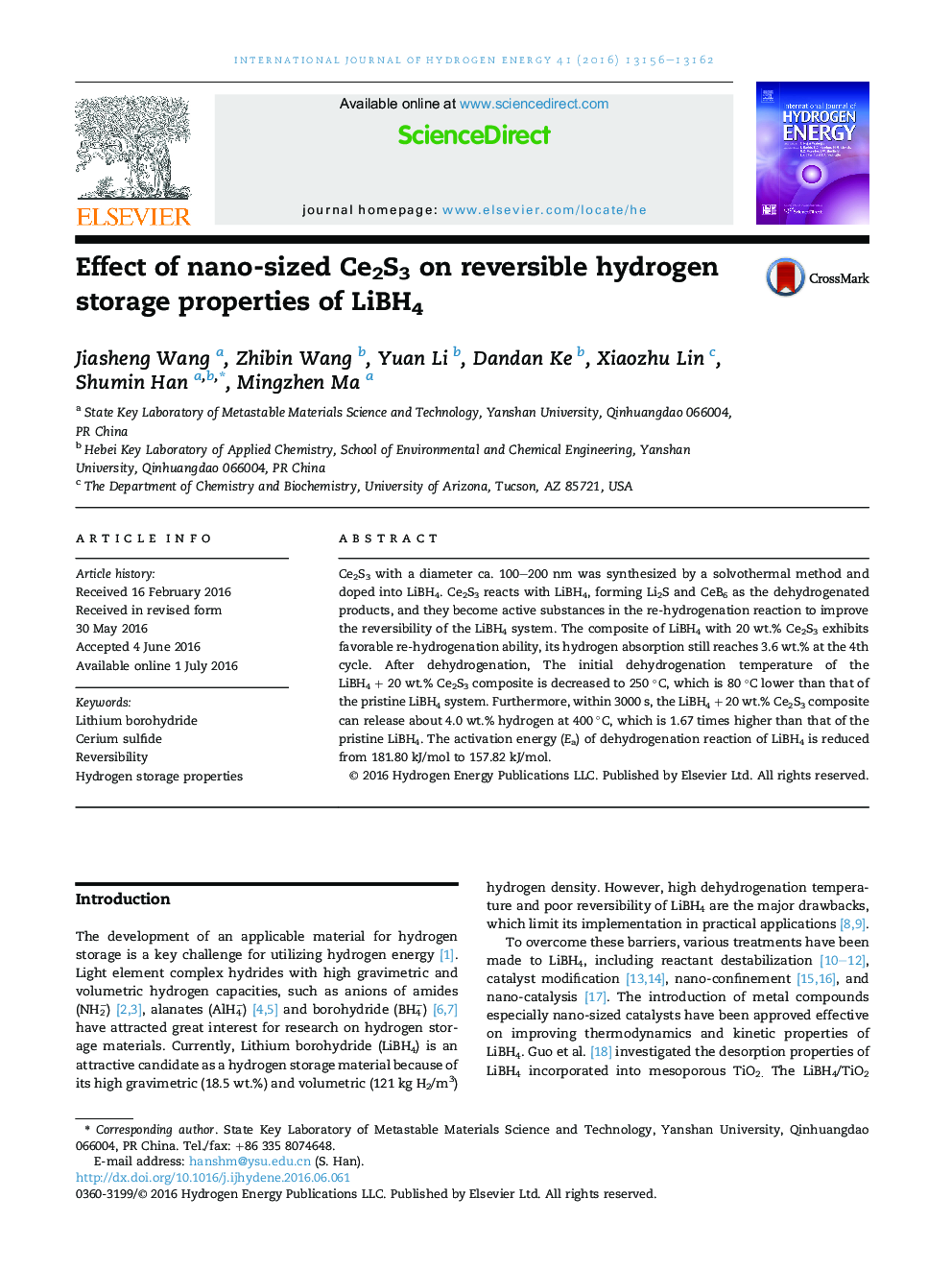| Article ID | Journal | Published Year | Pages | File Type |
|---|---|---|---|---|
| 1268229 | International Journal of Hydrogen Energy | 2016 | 7 Pages |
•A novel nano-sized Ce3S3 was synthesized and doped into LiBH4.•LiBH4 + 20 wt.% Ce3S3 exhibits favorable re-hydrogenation ability at the 4th cycle.•LiBH4 + 20 wt.% Ce3S3 onset dissociation temperature was 80 °C lower than LiBH4.•The generated Li2S and CeB6 have co-catalytic effects to the re-hydrogenation.
Ce2S3 with a diameter ca. 100–200 nm was synthesized by a solvothermal method and doped into LiBH4. Ce2S3 reacts with LiBH4, forming Li2S and CeB6 as the dehydrogenated products, and they become active substances in the re-hydrogenation reaction to improve the reversibility of the LiBH4 system. The composite of LiBH4 with 20 wt.% Ce2S3 exhibits favorable re-hydrogenation ability, its hydrogen absorption still reaches 3.6 wt.% at the 4th cycle. After dehydrogenation, The initial dehydrogenation temperature of the LiBH4 + 20 wt.% Ce2S3 composite is decreased to 250 °C, which is 80 °C lower than that of the pristine LiBH4 system. Furthermore, within 3000 s, the LiBH4 + 20 wt.% Ce2S3 composite can release about 4.0 wt.% hydrogen at 400 °C, which is 1.67 times higher than that of the pristine LiBH4. The activation energy (Ea) of dehydrogenation reaction of LiBH4 is reduced from 181.80 kJ/mol to 157.82 kJ/mol.
